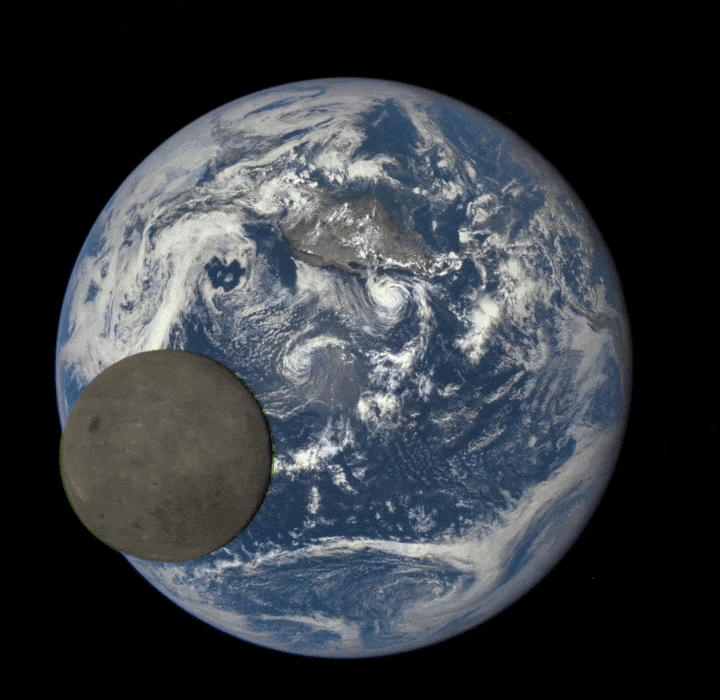
Această animație prezintă imagini reale din satelit ale părții îndepărtate a Lunii, iluminate de soare, în timp ce se încrucișează între Camera Policromatică de Imagini a Pământului (EPIC) a navei spațiale DSCOVR și telescop, și Pământ – la un milion de mile distanță. Credit: NASA/NOAA
Deși pare falsă, această înregistrare virală a Lunii care orbitează Pământul este de fapt reală. Pur și simplu nu este nou, în ciuda faptului că a făcut rondele din nou în această săptămână; de fapt a fost capturat acum peste 6 ani.
În 2015, a[{” attribute=””>NASA camera aboard the Deep Space Climate Observatory (DSCOVR) captured this unique series of images displaying the ‘dark side’ of the moon. The ‘dark side’ of the moon is often used to refer to the hemisphere of the moon that is facing away from Earth. However, it is more properly called the ‘far side’ as it is exposed to an equal amount of sunlight as the side facing Earth. We can never view the ‘far side’ from Earth due to a phenomenon called tidal locking, which occurs when an astronomical body takes the same amount of time to complete a full rotation around its axis and fully orbit around its partner.
Although DSCOVR’s primary purpose is to monitor solar winds for the National Oceanic and Atmospheric Administration (NOAA), the satellite also houses NASA’s Earth Polychromatic Imaging Camera (EPIC) which captured these images. This four-megapixel CCD camera and telescope maintains a constant view of Earth as it orbits and takes 13-22 images every day.
In order to capture Earth’s ‘natural color’, NASA combines three different monochrome exposures taken 30 seconds apart. The final combined image has a slight green offset to the right of the moon and thin blue and red offsets to the left of it which is due to the Moon’s movement between each exposure.
If you wish to view more images taken by EPIC, NASA publishes daily color images of different views of the Earth as it rotates throughout the day.

„Organizator. Scriitor general. Prieten al animalelor de pretutindeni. Specialist în cultură pop. Expert în internet amator. Explorator.”